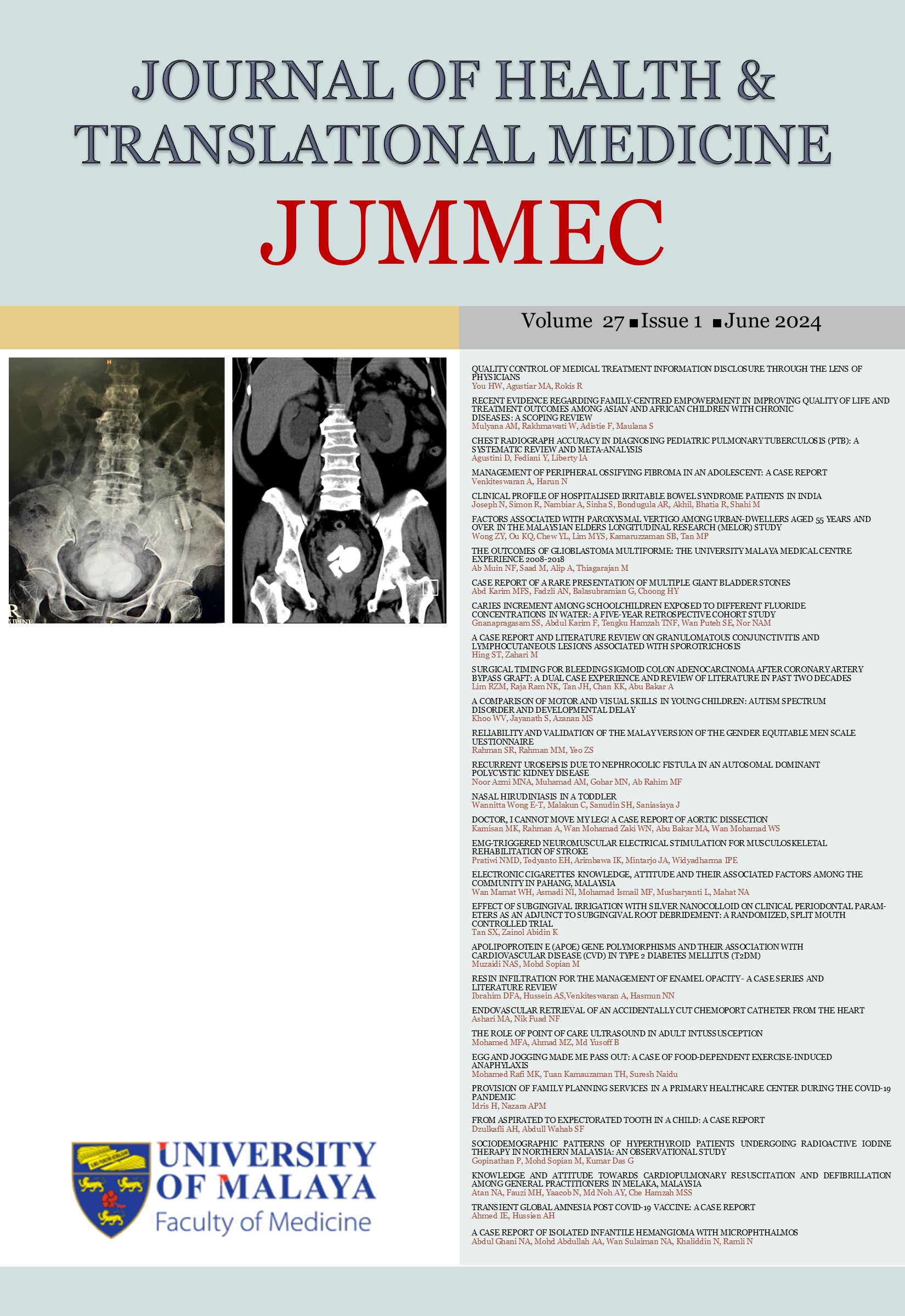FACTORS ASSOCIATED WITH PAROXYSMAL VERTIGO AMONG URBAN-DWELLERS AGED 55 YEARS AND OVER IN THE MALAYSIAN ELDERS LONGITUDINAL RESEARCH (MELOR) STUDY
Received 2023-01-24; Accepted 2023-08-04; Published 2024-01-05
DOI:
https://doi.org/10.22452/jummec.vol27no1.6Keywords:
Paroxysmal Vertigo, Dizziness, GeriatricAbstract
Background: Paroxysmal Vertigo (PV) negatively affects life quality and increases in prevalence with age, but the risk factors remain inconclusive.
Objective: The present study aimed to investigate the risk factors of PV among a multi-ethnic urban population in late mid-life and late life within a middle-income Southeast-Asian country.
Methods: Cross-sectional data from the first wave of the Malaysian Elders Longitudinal Research (MELoR) study were utilized for this study involving randomly sampled participants aged 55 years and over. Socio-demographics, comorbidities, and psychological status were obtained through home-based computer-assisted interviews.
Results: Based on an analysis of 1530 participants, mean age (SD) = 68.81 (7.49), 64.9% female; 32.9% Malay, 34.6% Chinese), the lifetime prevalence of PV was 12.1%. The risk factors associated based on multivariate analysis were hypertension, osteoarthritis, depression, and vitamin B12 Deficiency. Chinese ethnicity (OR = 0.582; 95% CI = 0.390 to 0.870) and smoking (OR = 0.377; 95% CI = 0.223 to 0.637) were protective factors against PV.
Conclusions: While the risk factors reported are similar to other studies, the lower prevalence of PV among ethnic Chinese and smokers had not previously been reported. Our study highlighted potential genetic and lifestyle links to PV which should be evaluated in future studies.
Downloads
Downloads
Published
Issue
Section
License
All authors agree that the article, if editorially accepted for publication, shall be licensed under the Creative Commons Attribution License 4.0 to allow others to freely access, copy and use research provided the author is correctly attributed, unless otherwise stated. All articles are available online without charge or other barriers to access. However, anyone wishing to reproduce large quantities of an article (250+) should inform the publisher. Any opinion expressed in the articles are those of the authors and do not reflect that of the University of Malaya, 50603 Kuala Lumpur, Malaysia.


